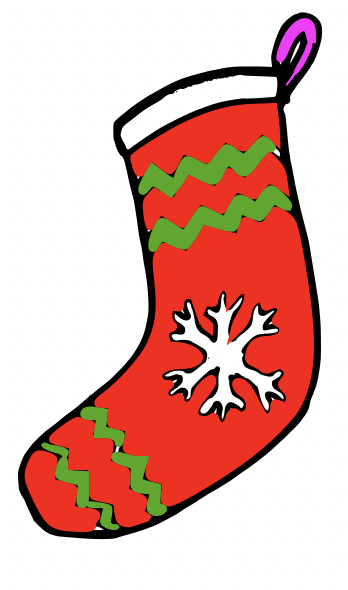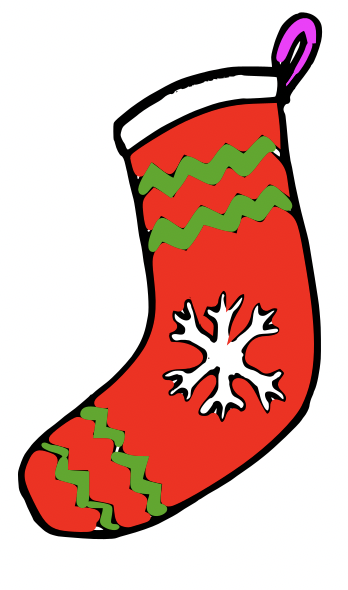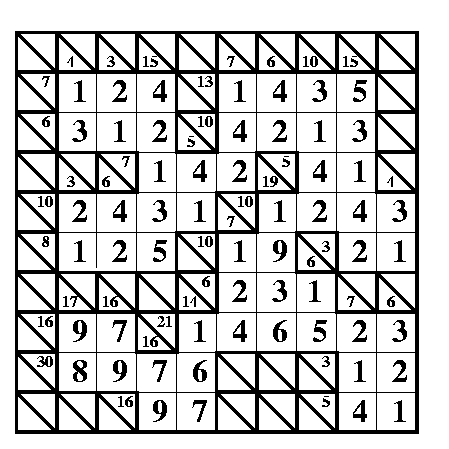Computer memory molecular style, memristors, maths puzzle answer and a “20 questions” activity
Remember remember the 24th of December – as that’s the day to hang out your Christmas stocking! We’re halfway through our CS4FN Christmas Computing Advent Calendar and that’s the picture for today’s door. I’ve made the somewhat stretched link between a stocking as a store for your presents and computer memory as a store for all your data.
If your own memory needs a prod you can find a list of our previous posts at the end of this one.
Molecular memory
by Charlie Tizzrd, QMUL. This article was originally published on the CS4FN website.
What happens when computers need so much memory that they start to test the laws of physics? Charlie Tizzard investigates.
A new way to store data in individual molecules might put some life back into an old law of computing. Back in 1965, the founder of Intel, Gordon Moore, noticed that computer chips doubled their performance about every 18 months. Not only was he right in 1965, he kept on being right. Ten, twenty, even thirty years later, chip power still doubled every 18 months. This observation was so strong that it began to seem like a law of nature. It was named “Moore’s law” after Gordon Moore himself.
But some experts believe that Moore’s law is beginning to waver. As electronics continue to get smaller and smaller they are pushing the law to the limit. Electronics are now so small that even the laws of physics are even getting in the way. An esteemed physicist, Michio Kaku, said that “we already see a slowing down of Moore’s law. Computing power simply cannot maintain its rapid exponential rise using standard silicon technology.”
What to do?
Unless we move away from silicon-based storage in computing, we will run into some serious issues in the near future. Fortunately, scientists and engineers are experimenting with alternative ways of storing data. One way is to use molecules whose atoms can be shifted around within them. Storing data is all about making physical changes to something. That means you can put information in molecules by representing it as different atomic states. Best of all, those states can be changed and read by the same technology we have today: changes to the amount of electricity the molecules conduct.
Our only problem is that this idea works great inside a lab setting, but it can be difficult in the real world. First of all, molecular storage needs to be mass produced, but so far it’s specialised equipment built only in labs. Not only that, but up until now the molecules had to be kept at almost absolute zero (that’s -273°C) in order to work. But now an international team of researchers at MIT led by Jagadeesh Moodera have pioneered a new technique that allows the molecules to be kept at roughly the freezing point of water. In physics that’s practically room temperature.
ven more importantly, the molecules, which previously had to be sandwiched between two electrical conductors, only require one conductor in the MIT setup. That will make mass manufacturing a lot simpler and cheaper for companies. “This is only the tip of tip of the iceberg” says Moodera, so don’t be surprised if you are using chemicals for storing your photos in the future!
Do you remember the birth of the memristor?
by Paul Curzon, QMUL. This article was originally published on the CS4FN website.
Electronics! It’s all been done long ago, hasn’t it? Resistors, transistors, capacitors, and inductors: all invented. See. Done it, filled in the worksheet, nothing else to discover…but did you miss the birth of the memristor?
In 2008 a new member of the electronics family was born. It had been discussed in theory as the missing link. It was mathematically possible, but never actually built till electronic engineers at Hewlett Packard used nanotechnology to bring it into existence.
Memristors are resistors with memory. Doh! Clever name! It can work as a data store, being either off or on, but it can store this information without any power too. This ability to store binary data (1s and 0s) with no drain on a battery, combined with its tiny, nanotechnology size means that memristors can store more data than any normal hard drive, and can be accessed as quickly as RAM – the kind of memory computers currently use. That means that in the future computers may be able to store more, start faster and be eco friendly too.
Building brains? That would be amazing enough but it turns out that the memistor has another trick up its nano-sleeve. Rather than working in digital mode, saving on/off (1,0) data like normal computer components, it can also hold values in between! The values it holds change every time the memristor receives an electrical signal, which is exactly what happens in the neurones of our brain as we learn. In the future networks of memristors could mimic the way our brains work, storing the things they learned from their electronic experiences. That would open up the possibility of a compact, low power way to build artificial intelligences.
Not bad for a humble little addition to the family of electronic components. See what you can miss is you don’t pay attention!
2. Today’s activity – the 20 questions game
The game 20 Questions, as the name suggests, involves trying to guess which famous person someone is thinking about by asking a maximum of 20 questions, all of which can be answered by YES or NO. The trick – of course – is to use good questions.
You’d be there all day if you kept asking them “Is it this person?”, “Is it that person?”. Those types of questions don’t chip away at the enormity of ~8 billion or so possibilities. Better questions might include “Are they alive?”, “Are they European?”. A yes or no answer to those questions tells you much more and helps narrow things down.
The game is a great way to learn about information theory and how the best questions are ones that split the options in half (roughly!). Most of the 8 billion people on Earth aren’t that famous, let’s assume it’s around 1 million people (because the maths is handy if we do!). If each of your questions divides a population of famous people in half each time and we start with one million people, how many questions do you need to ask before you get down to one person?
Or, to put it another way 2 (dividing in half) to the power of 20 (the 20 questions) or 220 gives 1,048,576 people (or items).
We developed an activity for teachers and students to do in the classroom (you can do it at home too) that uses the game to explore different search algorithms and improving how computers (and we) find information. It was number 4 in our 10 most popular downloads last year.
Use the activity to find out more about these computing concepts, while seeing how efficiently you can guess what someone else is thinking about.
- computational thinking
- linear search
- binary search
- divide and conquer
- comparing algorithms
3. Answer to yesterday’s puzzle
The creation of this post was funded by UKRI, through grant EP/K040251/2 held by Professor Ursula Martin, and forms part of a broader project on the development and impact of computing.

EPSRC supports this blog through research grant EP/W033615/1.







